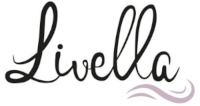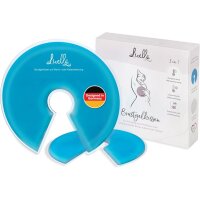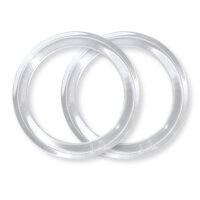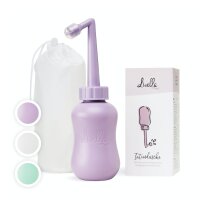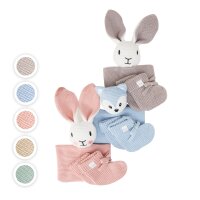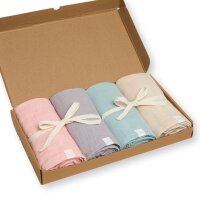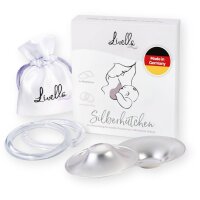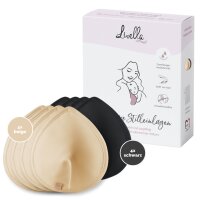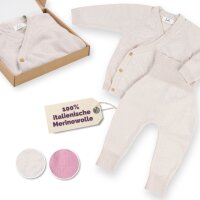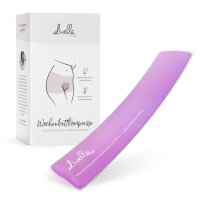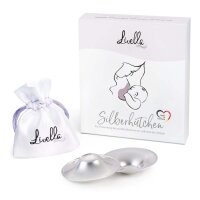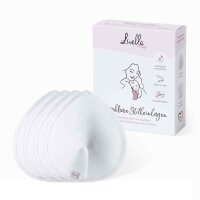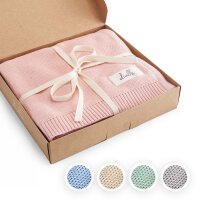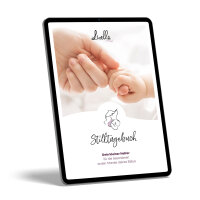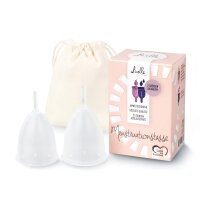There are many different things that can make breastfeeding difficult. Other than a weak let-down reflex or the difficulties that breastfeeding after a C-section brings with it, it’s mainly anatomical issues in mother or baby that can lead to breastfeeding problems.
Anatomy-related issues in a newborn baby are mainly caused by a shortened frenulum. On the mother's side, breastfeeding difficulties often stem from nipple deformity which makes it hard for the baby to properly attach to the breast. If the nipples are too flat or even pulled inwards, breastfeeding is often made difficult.
Can you breastfeed with an inverted nipple? What are the consequences of flat or inverted nipples for breastfeeding? And how to fix a flat nipple for breastfeeding? Read on to get some helpful tips for breastfeeding with flat or inverted nipples.
Table of contents
What is a flat or inverted nipple when breastfeeding?
How does an inverted or flat nipple affect breastfeeding?
Inverted or flat nipples: breastfeeding is possible
Flat or inverted nipples: breastfeeding tips to help you succeed
A final word on flat or inverted nipples and breastfeeding
What is a flat or inverted nipple when breastfeeding?
Inverted nipples are nipples that are permanently (or at least temporarily) pulled inwards—often due to a milk duct that is too short. Most women view inverted nipples as an aesthetic imperfection that doesn’t cause any further problems. However, this changes when they start breastfeeding, which is when the unusual form of the nipple can lead to difficulties.
Another type of nipple deformity that can make breastfeeding more difficult for mother and baby is a flat nipple. In contrast to inverted nipples, flat nipples are not pulled inwards, but are simply level with the areola. That is to say, they don’t stick out like normal nipples do.
If you want to find out if you have flat or inverted nipples, all you have to do is to squeeze your nipple between your thumb and index finger. Under the pressure, a flat nipple will become slightly everted—although much less than a normal nipple. An inverted nipple, on the other hand, will typically draw even further inwards.

How does an inverted or flat nipple affect breastfeeding?
The good news is that breastfeeding with flat or inverted nipples is possible, since breastfeeding success doesn’t depend on the nipple alone. In fact, a good breastfeeding latch means that your baby not only grasps your nipple but that he or she takes a fair portion of the surrounding breast tissue into the mouth. The nipple should ideally be positioned far back between the tongue and the soft palate.Nevertheless, breastfeeding with flat nipples (and also with inverted nipples) is often more difficult. A normal nipple sticks out when erect, which makes it easier for your baby to attach to your breast.
A flat or inverted nipple, on the other hand, can lead to several problems when breastfeeding, including:
- Your baby struggles to properly attach to your breast.
- Your baby’s sucking at your breast is less effective than with normal nipples.
- Flat or inverted nipples are typically under more strain during breastfeeding, which increases the risk of sore nipples.
- It’s difficult for your baby to maintain the vacuum at your breast because he or she cannot get a proper latch.
- The resulting difficulties to drink properly can lead to frustration, sleepiness, or restlessness in your baby when at the breast.
Inverted or flat nipples: breastfeeding is possible
How to breastfeed with flat or inverted nipples? This question is often raised by new mothers who struggle to get a good latch due to the shape of their nipples. If you notice that your nipples are flat or inverted, you should seek professional support from a midwife or lactation consultant.
Inverted or flat nipples do not always have to turn into a problem when breastfeeding. But if they do, there are a few measures you can take to increase your chances of successful breastfeeding. These measures include:
- Massage or stimulate your nipple: Massaging movements or cold therapy (for example, by applying a cold breast gel pad) can help make inverted or flat nipples erect. However, make sure to protect your skin from hypothermia when trying to stimulate your nipple with a cool pack.
- Use nipple shields: Nipple shields are small plastic covers that are placed over the nipple to help your baby attach to your breast more easily. They also help to pull out the nipples when worn frequently during breastfeeding. The shields shouldn’t be confused with silver nursing cups which are designed to protect sore nipples from friction and external pressure.
- Opt for laid-back nursing: The most suitable breastfeeding position for women with flat or inverted nipples is laid-back nursing. Laid-back nursing activates your baby’s natural reflexes better than any other breastfeeding position and therefore significantly increases your chances of breastfeeding your little one with success.
- Adjust your breastfeeding latch: Getting a good latch is always important when breastfeeding, but especially so for mothers with flat or inverted nipples. If your nipples are flat or inverted, it’s best to position your baby in a way that he or she grasps more breast tissue below the areola than above it. This means that his or her nose is quite close to your nipple. The other characteristics of a good breastfeeding latch remain the same, i. e. mouth wide open, nipple deep in the baby's mouth, etc.
- Use your hands to form a breast sandwich: Another way of preparing flat or inverted nipples for breastfeeding is to shape your breast into a sandwich with your hand. To do this, make a U-form with your hand, thumb placed on top of your breast and the other fingers placed below the breast. Then pull your breast back against your upper body to make your nipple stand out.

Flat or inverted nipples: breastfeeding tips to help you succeed
Breastfeeding with flat or inverted nipples is not impossible. Here are a few tips to help you succeed:
- Get professional support: Inverted nipples make breastfeeding more challenging than usual. Having the support of an experienced midwife or lactation consultant will help you master the challenge and learn the necessary techniques right from the start to avoid breastfeeding pain further down the line.
- Talk to other breastfeeding mums: If you have flat or inverted nipples, you should know that you are not alone. There are many women whose nipples don’t have a perfect shape. Talking to other mothers who are in the same position and getting some tips from them can be very helpful.
- Take your time when breastfeeding: Getting a good latch, which is particularly important when breastfeeding with flat or inverted nipples, is incredibly difficult if you are rushed or under pressure. So take it slow and allow for enough time to position your baby properly at the breast.
- Use nipple formers during pregnancy: Depending on the shape of your nipple, it might be useful to start wearing nipple formers already during pregnancy. But make sure to talk to a midwife or lactation consultant first.
- Start breastfeeding immediately after birth: Whether you have normal, flat or inverted nipples, breastfeeding is a matter of practice. Starting as early as possible and practising breastfeeding as often as your baby requests to be put to the breast is crucial for successfully breastfeeding with inverted or flat nipples.
- Express breast milk: If you experience breastfeeding difficulties due to the shape of your nipples, you should regularly express breast milk (either by hand or with a breast pump) to increase your milk supply. Additional pumping is also important to prevent blocked milk ducts or mastitis.
A final word on flat or inverted nipples and breastfeeding
Flat or inverted nipples should not be a reason to decide against breastfeeding. Breast milk is the best nutrition for your little one and every bit of breastfeeding is beneficial to your baby. With the support of an experienced midwife or lactation consultant, you should be able to overcome the hurdles and breastfeed successfully despite your nipples not having a perfect shape.
Getting a good latch and shaping the nipples properly for breastfeeding are two important factors to help you succeed, as is choosing the right breastfeeding position and stimulating the nipple with a massage or a cool pack. And always remember: Breastfeeding is a matter of practice. So don’t be discouraged if, due to a flat nipple, breastfeeding doesn’t work right from the start.
